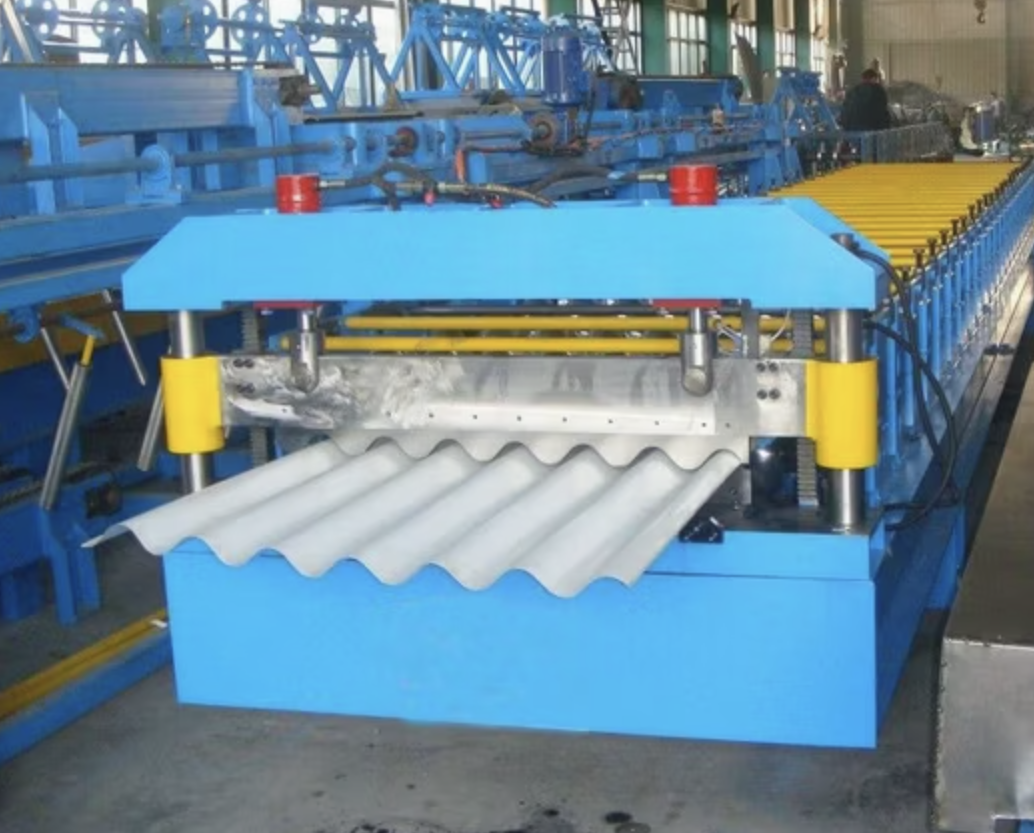To express an interest in this machine please submit the form below.

Not Sure What Machine You Need?
Select Your Profile, We'll Match It
Choose your desired profile drawing, and let Machine Matcher connect you with the best roll forming machine tailored to your needs.
Browse Profiles
A Metal Roof Roll Forming Machine is a specialized piece of equipment used to create metal roofing panels from sheet metal coils. These machines take raw metal coils and progressively shape them through a series of roller stations to achieve the precise profile desired. Metal roof panels produced by these machines are widely used in construction, particularly for residential, commercial, and industrial roofing.
The machine’s design allows for efficient, continuous production, yielding panels with high consistency and accuracy. Equipped with advanced control systems, these machines ensure precision in forming, cutting, and stacking, making them indispensable for manufacturers aiming to meet high-volume demand.
Below are the typical specifications and features of a Metal Roof Roll Forming Machine:
A: Metal roof roll forming machines offer several benefits, including high production efficiency, precise profiling, and the ability to produce consistent panel quality. These machines also reduce labor costs, improve production times, and allow for customization of panel lengths and profiles, catering to a variety of roofing needs.
A: Most metal roof roll forming machines are compatible with common roofing materials such as galvanized steel, aluminum, and copper. However, it’s essential to check the machine’s specifications, particularly regarding material thickness and hardness, to ensure it can handle the metal type you plan to use.
A: Metal roof roll forming machines vary in size, but they generally require a sizable amount of floor space due to their length and additional equipment like uncoilers and stackers. Ensure a large enough area for operation, maintenance, and safe movement around the machine.
A: Regular maintenance includes lubricating moving parts, checking and adjusting roller alignments, and cleaning debris from rollers and cutting systems. Routine inspection of hydraulic systems and control units also helps keep the machine in optimal condition, reducing the risk of breakdowns.
A: The panel length is controlled by the PLC system, which allows the operator to set precise dimensions. The machine then automatically cuts the panels to the programmed length as they are formed.
A: Metal roof roll forming machines can be fitted with different roll sets or tooling to produce various profiles. Some machines are designed for a specific profile, while others are adjustable for multiple profiles. Switching profiles typically requires changing the rollers, which may take additional time and setup.
A: Yes, many machines offer an optional stacker that automatically organizes and stacks panels as they are produced. This feature helps streamline production, reduce manual labor, and improve overall efficiency.
A: With proper maintenance and regular servicing, a high-quality metal roof roll forming machine can last over 10–15 years. Ensuring that the machine is well-lubricated, rollers are cleaned, and controls are regularly checked will contribute to a long operational lifespan.
A: Installation and setup can vary based on the machine's complexity and factory requirements but generally takes a few days to a week. Professional installation teams or technicians are recommended to ensure the machine is installed safely and operates optimally from the start.
Copyright 2025 © Machine Matcher.